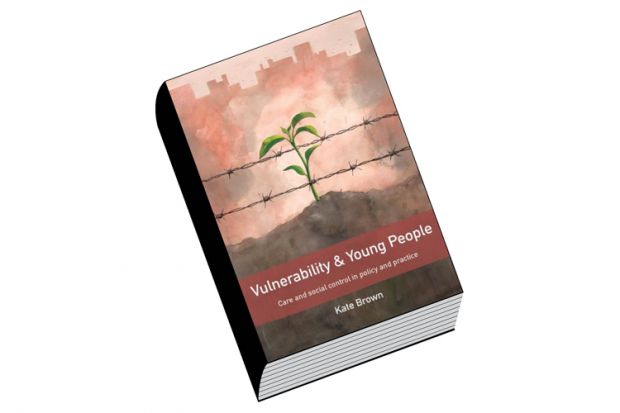Working in the field of children’s and young people’s public health, I was initially drawn to Kate Brown’s book by its title, as there are few texts critically examining the concept of vulnerability, let alone in relation to young people. When it arrived for review, I was further enticed by the cover image of a single healthy green shoot growing through a barbed wire fence amidst a murky urban backdrop. Perhaps it was, I reflected at the end of reading the book, a symbol of human agency.
Although the term “vulnerability” is widely used in contemporary policy arenas such as child welfare and protection, it is an under-researched and elusive concept. Brown questions the increasing focus on vulnerability in policy and practice, and argues that in a context of economic liberalism and welfare cutbacks, the concept can work to marginalise further those young people who might be considered the “most vulnerable” in society.
This thought-provoking work looks at young people as a case study group to explore beliefs about vulnerability. It includes a helpful and much-needed analysis of the “principal manifestations of vulnerability” including its alignments with risk, and its use in different disciplinary orientations. Brown highlights the frictions between two views of the concept: “one that is patronising and stigmatising”; another “that has a unique, unifying and socially transformative quality that can be utilised to foster autonomy and social justice”.
At the heart of Brown’s book is an empirical study that she undertook in one English city involving 25 “vulnerable” subjects aged 12 to 18 and accessed through a number of agencies, including a young people’s drugs service, a sexual exploitation project and a vulnerable children’s service that supports homeless and refugee children. She also interviewed a small sample of 15 policymakers and practitioners involved in providing interventions for vulnerable young people, such as social care and Youth Offending Services; and an ethnographic study of professional meetings, conversations and interactions.
What Brown reveals is a complex process of judgements about vulnerability, being shaped by moral and personal preferences, organisational classifications, wider service delivery pressures, and gendered dimensions. However, her book’s central focus is an analysis of the life stories of the vulnerable young people themselves. Pen portraits of the young people are included in the Appendices, with pseudonyms chosen by the interviewees. What the book does brilliantly is to give them voice, while revealing the complex adversities and multiple disadvantages they face as well as the interventions and factors that the young people considered to be helpful for them. As other research has found, the young people’s narratives reveal considerable tenacity and aspirations, with many seeing education and attending college as a way to a more secure and better future.
However, what struck me throughout – and to her credit Brown does consider this in some detail – is that many of these young people see vulnerability as something that applies to others and not to themselves. While acknowledging that they have “difficult lives”, there is a general resistance to the idea that they are themselves vulnerable, revealing a mismatch between official understandings of vulnerability and young people’s lived realities.
Jane Appleton is professor in primary and community care, Oxford Brookes University.
Vulnerability and Young People: Care and Social Control in Policy and Practice
By Kate Brown
Policy Press, 252pp, £70.00
ISBN 9781447318170
Published 13 July 2015
Register to continue
Why register?
- Registration is free and only takes a moment
- Once registered, you can read 3 articles a month
- Sign up for our newsletter
Subscribe
Or subscribe for unlimited access to:
- Unlimited access to news, views, insights & reviews
- Digital editions
- Digital access to THE’s university and college rankings analysis
Already registered or a current subscriber?




